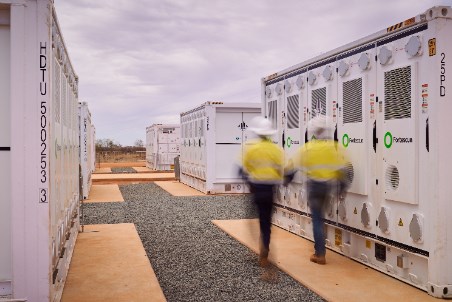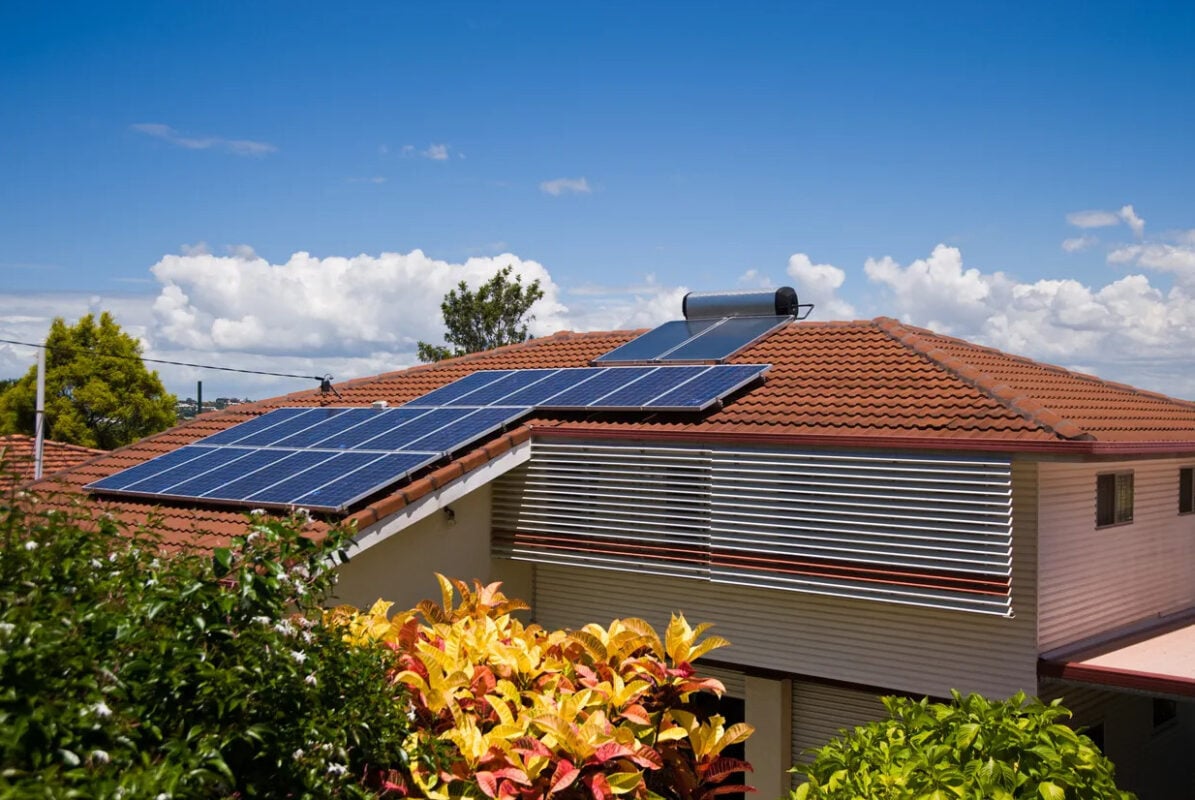Wind Farms Facing Existential Risk as Global Warming Ramps Up – Haaretz

Report on the Vulnerability of Wind Energy Infrastructure to Climate Change-Induced Extreme Weather
Introduction: Aligning Wind Energy with Sustainable Development Goals
Wind energy is a cornerstone in the global strategy to achieve Sustainable Development Goal 7 (Affordable and Clean Energy) and a critical tool for SDG 13 (Climate Action). However, the increasing intensity of extreme weather events, driven by climate change, poses a significant threat to the resilience of this vital infrastructure. This report analyzes recent research on the vulnerability of wind turbines, highlighting the challenges to building and maintaining the resilient infrastructure mandated by SDG 9 (Industry, Innovation and Infrastructure).
Research Findings: A Challenge to SDG 7 and SDG 13
A study published in Nature Communications by researchers from the Southern University of Science and Technology reveals a critical vulnerability in the current approach to wind farm development, directly impacting the long-term viability of clean energy goals.
- Increased Climate Risk: Climate change is amplifying the intensity of extreme wind events, creating conditions that exceed the operational limits of widely used wind turbine technologies.
- Widespread Exposure: Over 40 percent of existing and planned offshore wind farms in Europe and Asia are already exposed to wind speeds beyond the tolerance levels for which their turbines were designed.
- Focus on Class III Turbines: The research highlights the risk associated with Class III turbines, which are engineered for milder wind conditions (mean wind load of 7.5 m/s, extreme load of 37.5 m/s). Their widespread adoption is driven by lower manufacturing and installation costs, creating a conflict between economic incentives and the need for resilient infrastructure under SDG 9.
Analysis of Turbine Vulnerability and Operational Impact
The operational response of wind turbines to extreme wind conditions involves a sequence of automated safety measures. While designed to prevent catastrophic failure, these measures have implications for energy security and infrastructure integrity.
- Automated Control Systems: As wind speeds approach design limits, turbines first attempt to mitigate stress by adjusting blade angles (pitch control) and rotating the nacelle to face the wind (yaw control).
- Protective Shutdown: If control systems are insufficient, turbines initiate an automatic shutdown to prevent damage. While this protects the asset, frequent shutdowns during increasingly common storms compromise the reliability of clean energy supply, affecting progress toward SDG 7.
- Structural Failure Risk: In extreme events such as super typhoons, where wind speeds far exceed design limits (e.g., Super-Typhoon Yagi at 74.5 m/s), turbines can experience catastrophic structural failure, including blade fractures, tower bending, or complete collapse.
Case Studies and Projections: The Growing Risk to Sustainable Infrastructure
Recent events and scientific projections underscore the urgent need to re-evaluate wind farm resilience in the context of climate action.
- Infrastructure Damage: The collapse of at least six turbines in Hainan, China, during Super-Typhoon Yagi in 2024 exemplifies the direct threat to the infrastructure pillar of SDG 9. The economic cost of such failures is immense, involving dismantling, transport, and rebuilding, which diverts resources from expanding clean energy capacity.
- Intensifying Storms: Events like Hurricane Melissa, with wind speeds reaching approximately 80 m/s, demonstrate that current weather patterns can already surpass the limits of even robust turbine designs.
- Future Projections: Assessments indicate that more than half of existing wind farms are located in regions where extreme wind speeds are projected to increase, jeopardizing long-term investments and the stability required to meet SDG 13 targets.
Recommendations for Resilient Infrastructure and Future Planning
To safeguard progress toward the Sustainable Development Goals, a strategic shift toward more resilient wind energy technology and planning is imperative.
- Adoption of Advanced Technology: Investment in and deployment of higher-level, typhoon-resistant wind turbines should be prioritized in high-risk regions. Models capable of withstanding wind loads up to 79.8 m/s already exist and are essential for ensuring the long-term operational security of wind farms.
- Climate-Informed Planning: Wind farm development must integrate advanced climate projections to ensure that infrastructure is built to withstand future, not just historical, weather extremes. This proactive approach is fundamental to fulfilling the resilience objective of SDG 9.
- Systematic Risk Assessment: A comprehensive assessment of potential energy generation losses due to storm-related shutdowns is needed. Quantifying this impact is crucial for understanding the full economic and energy security implications, thereby enabling more informed policy and investment decisions aligned with SDG 7.
Analysis of Sustainable Development Goals in the Article
1. Which SDGs are addressed or connected to the issues highlighted in the article?
The article discusses the impact of climate change-driven extreme weather on wind energy infrastructure. This connects directly to several Sustainable Development Goals (SDGs) that focus on energy, infrastructure, and climate action.
-
SDG 7: Affordable and Clean Energy
This goal is central to the article, as it focuses on wind turbines, a key technology for generating clean and renewable energy. The article’s discussion on the vulnerability of wind farms directly impacts the reliability and sustainability of clean energy sources, which is a core component of SDG 7.
-
SDG 9: Industry, Innovation and Infrastructure
The article highlights the challenge of building resilient infrastructure. Wind turbines are a critical part of modern energy infrastructure. The finding that many turbines are not designed to withstand intensifying storms points to a failure in developing “quality, reliable, sustainable and resilient infrastructure” as mandated by SDG 9.
-
SDG 13: Climate Action
This goal is the underlying theme of the article. The text explicitly states that “extreme winds generated by climate change-driven monster storms” are the cause of the problem. The entire analysis revolves around the need to adapt energy infrastructure to the new realities of climate change and strengthen resilience against climate-related hazards like super-typhoons and hurricanes.
2. What specific targets under those SDGs can be identified based on the article’s content?
Based on the issues discussed, several specific targets within the identified SDGs are relevant.
-
Target 7.2: Increase the share of renewable energy
By 2030, increase substantially the share of renewable energy in the global energy mix. The article discusses “existing and planned offshore turbine farms in Europe and Asia,” which are built to meet this target. However, it warns that their vulnerability to extreme weather threatens the long-term viability and growth of this renewable energy share.
-
Target 9.1: Develop resilient infrastructure
Develop quality, reliable, sustainable and resilient infrastructure… to support economic development and human well-being. The article’s core argument is that a significant portion of wind turbine infrastructure is not resilient. The fact that turbines may shut down or even collapse (“blade fracture, tower bending, or even full collapse”) during storms shows a direct challenge to achieving this target.
-
Target 13.1: Strengthen resilience and adaptive capacity to climate-related hazards
Strengthen resilience and adaptive capacity to climate-related hazards and natural disasters in all countries. The article serves as a case study for this target. It demonstrates a lack of resilience in the energy sector to climate-related hazards (extreme winds). The discussion about needing “typhoon-resistant wind turbines” is a direct call for increasing adaptive capacity.
3. Are there any indicators mentioned or implied in the article that can be used to measure progress towards the identified targets?
The article provides specific data and examples that can serve as indicators to measure the challenges and progress related to the identified targets.
-
Indicators for Target 9.1 and 13.1 (Resilience of Infrastructure)
- Percentage of vulnerable infrastructure: The article explicitly states that “over 40 percent of existing and planned offshore turbine farms in Europe and Asia are exposed to wind beyond the speeds they were designed to tolerate.” This is a direct indicator of infrastructure vulnerability.
- Frequency of infrastructure failure: The article provides a concrete example of failure: “Super-Typhoon Yagi in 2024 caused at least six turbines to collapse in Hainan, China.” The number of such incidents serves as an indicator of a lack of resilience.
- Gap between climate hazard intensity and infrastructure design limits: The article provides quantifiable data for this gap. It mentions the design limit for Class III turbines is an “extreme wind load” of 37.5 m/s, while storms like Super-Typhoon Yagi (74.5 m/s) and Hurricane Melissa (80 m/s) have wind speeds more than double this limit. This gap is a critical indicator of insufficient adaptation.
-
Indicator for Target 7.2 (Renewable Energy)
- Economic loss in the renewable energy sector: While the article states that the loss of energy production “hasn’t been calculated,” it highlights the significant economic risk from infrastructure collapse, describing it as a “terrible waste” that can cost “hundreds of millions of yuan.” The economic losses due to climate-related damage to renewable energy infrastructure can be an indicator of the sustainability challenges in achieving Target 7.2.
4. Table of SDGs, Targets, and Indicators
| SDGs | Targets | Indicators |
|---|---|---|
| SDG 7: Affordable and Clean Energy | 7.2: By 2030, increase substantially the share of renewable energy in the global energy mix. | Economic loss from damage to renewable energy infrastructure (e.g., collapsed turbines costing hundreds of millions of yuan). |
| SDG 9: Industry, Innovation and Infrastructure | 9.1: Develop quality, reliable, sustainable and resilient infrastructure. | Percentage of wind farms exposed to winds exceeding their design tolerance (“over 40 percent”). Number of infrastructure failures due to extreme weather (“at least six turbines to collapse”). |
| SDG 13: Climate Action | 13.1: Strengthen resilience and adaptive capacity to climate-related hazards and natural disasters. | The measured gap between design limits of infrastructure (e.g., Class III turbine max speed of 37.5 m/s) and the intensity of climate hazards (e.g., Hurricane Melissa wind speed of 80 m/s). |
Source: haaretz.com
What is Your Reaction?
 Like
0
Like
0
 Dislike
0
Dislike
0
 Love
0
Love
0
 Funny
0
Funny
0
 Angry
0
Angry
0
 Sad
0
Sad
0
 Wow
0
Wow
0




















































.jpg.webp?itok=0ZsAnae9#)


























